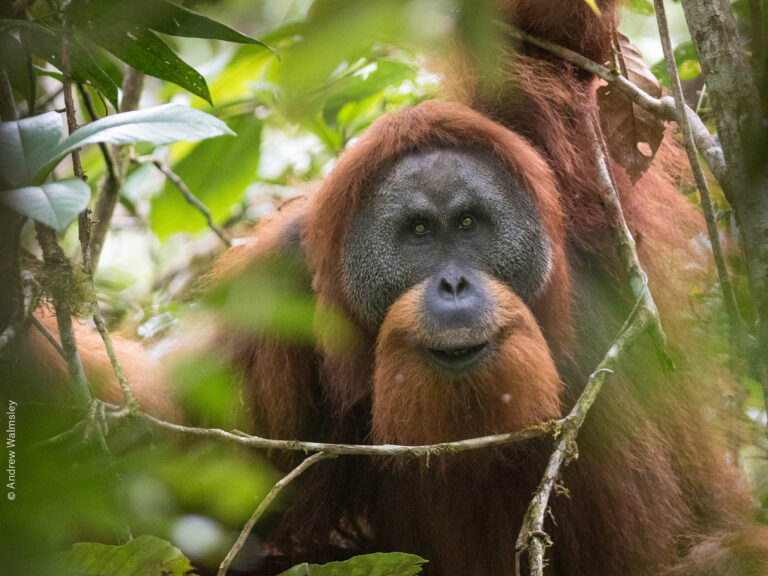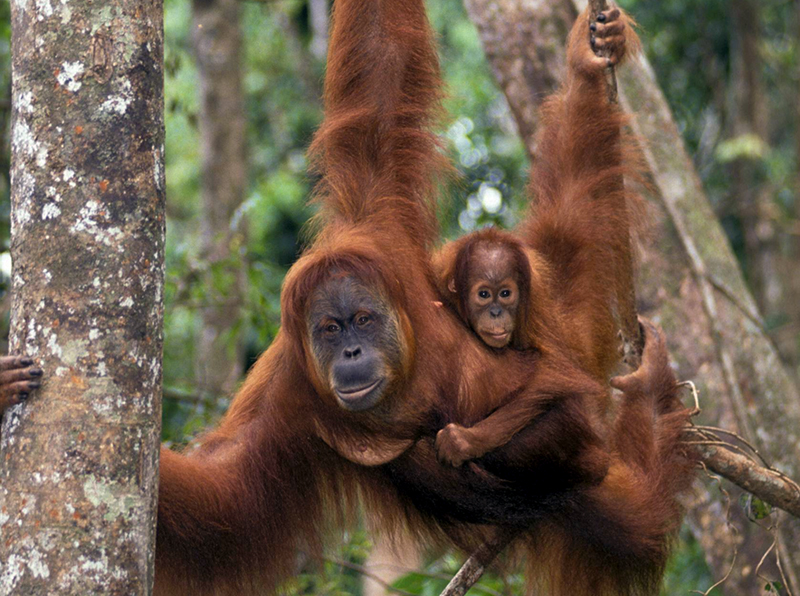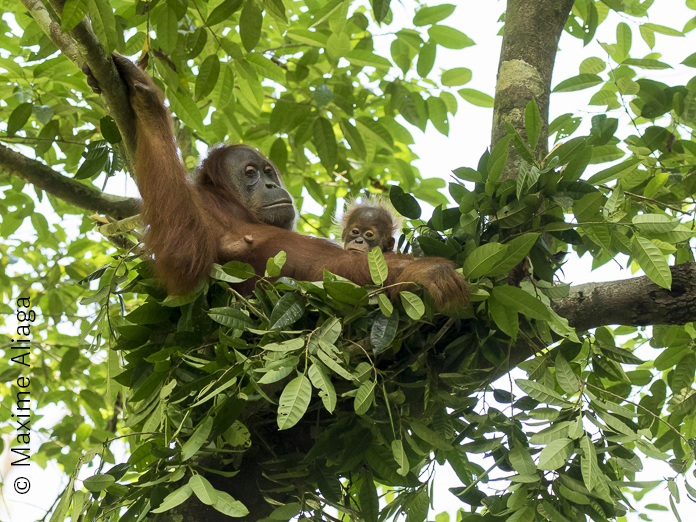Orangutan profile

Orangutan profile
For most of us, the difference between the three orangutan species is barely recognisable. Apart from their different morphological and genetic characteristics, the three species have developed many similar but, in some cases, also some remarkably different behaviours.
Population, habitat and life expectancy
| Bornean orangutan (Pongo pygmaeus) | Tapanuli orangutan (Pongo tapanuliensis) | Sumatran orangutan (Pongo abelii) |
| 100,000 individuals | < 800 individuals | 13,710 individuals |
| Dipterocarp and peat swamp forests, Borneo | Batang Toru ecosystem, Sumatra | Tropical lowlands and peat swamp forests in the Leuser ecosystem, Sumatra |
All three orangutan species are threatened with extinction, mainly due to the loss and fragmentation of their habitat, but also because of illegal wildlife trade and hunting. The life expectancy of orangutans is between 44 and 55 years, even longer in zoos. They are generally solitary animals, but occasionally they associate with conspecifics. The home range , within which the individual animals are active, is huge for male orangutans. It may include the home ranges of several females.

Investing in their offspring
The females are fully grown at 12 to 15 years of age. They mate with an attractive male every 6 to 9 years and, after a gestation period of 8 to 9 months, usually give birth to just one baby. The infants stay with their mothers and observe and imitate them until they have learnt everything they need to survive independently in the rainforest. The males are not involved in rearing the young.

Long calls, kiss-squeaks and other sounds
Only dominant males with developed cheek flanges, communicate over long distances with long calls to drive away subordinate males and attract females for mating. Kiss-squeaks, on the other hand, are an expression of fear or stress that orangutans emit when encountering researchers, clouded leopards or conspecifics. Mothers communicate with their young with raspy guttural sounds and the young themselves can be heard uttering ooh when playing. If young orangutans find themselves in a desperate situation, the quiet sounds turn into heart-rending cries. They like to make loud noises when building their nests.
To each his own nest
Nest building is one of the orangutans’ special skills. Every evening and often also for a midday nap, they build a stable and comfortable nest from leaves and young branches. It takes several years for young animals to master this art, which is necessary for their survival. They learn and practice this from an early age, and it is an important criterion for assessing whether an orangutan can be released into the wild.

Favourite food: fruits
During the day, orangutans are always on the move in search of food. Their favourite food is ripe fruit, but they also eat leaves, bark and termites. They poke the latter out of their burrows with sticks. They also use sticks to fish for honey or to open fruit. If they have the opportunity, orangutans eat meat, but they do not go hunting.

Differences between Sumatran and Bornean orangutans
All orangutans swing from tree to tree with their long arms. However, the male orangutans on Borneo can also move on the ground. They use their arms and legs to walk. They have even been observed bathing in large puddles in peat swamp areas. Sumatran orangutans, on the other hand, generally avoid the ground. They are rather shy of water and will not cross a river if they can find a way to get to the other side via a tree bridge or across fallen trees. This is why the river forms a natural boundary at our reintroduction centre in Jantho. The water prevents the animals we have released from travelling in the wrong direction.



